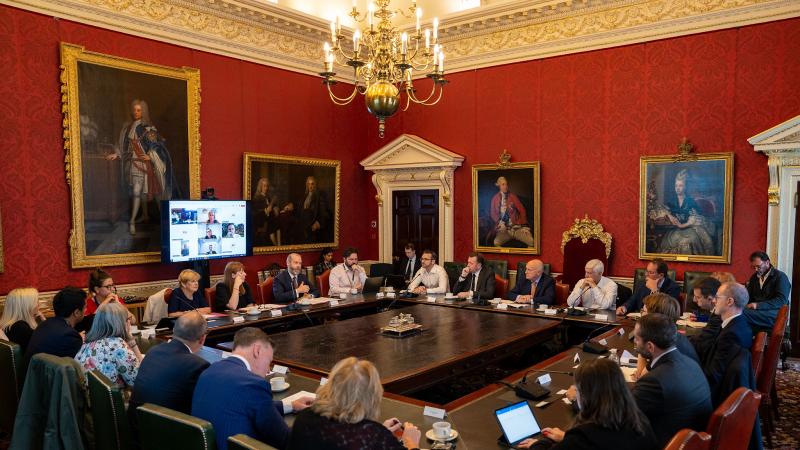Canada remembers Harris as a homesick student who loved to dance
Agence France-Presse
August 17, 2024

In this undated yearbook photo released by the Westmount High School, US presidential candidate Kamala Harris said her favorite pastime during her teen years spent in Montreal was dancing (AFP)
Kamala Harris spent her adolescence in Montreal often pining for her California hometown, but former Canadian classmates remember the American presidential candidate as an outgoing student with a big smile, who loved dancing.
It was in 1976 at the age of 12 that the vice president and Democratic candidate in this year's US presidential race discovered the harsh, cold winters of Canada's second largest city.
Her divorced mother uprooted her and her sister Maya from their California hometown of Oakland to take a job researching cancer at Montreal's Jewish General Hospital.
"The thought of moving away from sunny California in February, in the middle of the school year, to a French-speaking foreign city covered in twelve feet of snow was distressing, to say the least," Harris recounted in her 2019 memoir.
The first woman, first African-American and first Asian-American to become vice president of the United States, Harris has said little about her years in Canada and her biography on the White House website does not even mention them.
Although she didn't speak French when she arrived in Montreal, her mother insisted on enrolling her in a French-language school. After struggling to pick up French, she transferred to a bilingual school with artistic and musical programs and then to Westmount High School, an English-language public high school, where she graduated in 1981.
- A diverse public school -
Harris was "very friendly, very outgoing. Nice to everybody," former classmate Anu Chopra Sharma told AFP, describing her friend as a bright student who took the time to help others.
"We all had a tough time with French, because we weren't native French speakers," she commented.
French is spoken by the majority in the province, but in the 1970s and 1980s tensions between English and French speakers peaked as a Quebec nationalist identity tied to the language of Moliere took shape -- marked by two failed referendums on Quebec independence.
Westmount High School, located in a wealthy and English-speaking borough of Montreal, accepted students from nearby neighborhoods and so "a lot of the kids were working class," said former art teacher Mara Rudzitis.
The student body was also ethnically diverse, drawing from Caribbean, Indian, Pakistani and Chinese immigrant communities.
- 'Always had stuff to say' -
Active and very sociable, Harris, now 59, was at the time a member of various clubs and participated in a school fashion show.
As a young girl, born to a Jamaican father and an Indian mother, she found sisterhood in disco dance troupes "Super Six" and "Midnight Magic," according to a school yearbook.
Old photos show Harris and fellow dancers in glittery costumes busting a move.
"She was always smiling, laughing, as you see her today. She was getting along with anybody," said her friend Dean Smith.
Rudzitis remembers a "very smart" teenager with a lot of friends, who loved learning and spending time in the art room during lunch breaks.
She was eloquent and "always had stuff to say," she added, delighted to see her former student aspire to the presidency of the United States.
It was also during her years in Canada that she decided on a career as a prosecutor, eventually working her way up to district attorney of California.
"When I was in high school, I had a best friend who I learned was being molested," Harris recounted in a September 2020 campaign video. "A big part of the reason I wanted to be a prosecutor was to protect people like her."
Her friend Wanda Kagan had stayed with Harris's family for several months after revealing she had been abused by her stepfather.
While Harris appeared to have made the best of her time in Canada, she admitted in her memoir to feeling "homesick" for the United States. "I felt this constant sense of yearning to be back home," she said.
Once she had completed her Canadian studies, she returned to the United States, where she attended Howard University from 1982, a historically black school in Washington that has been called the "Black Harvard."









